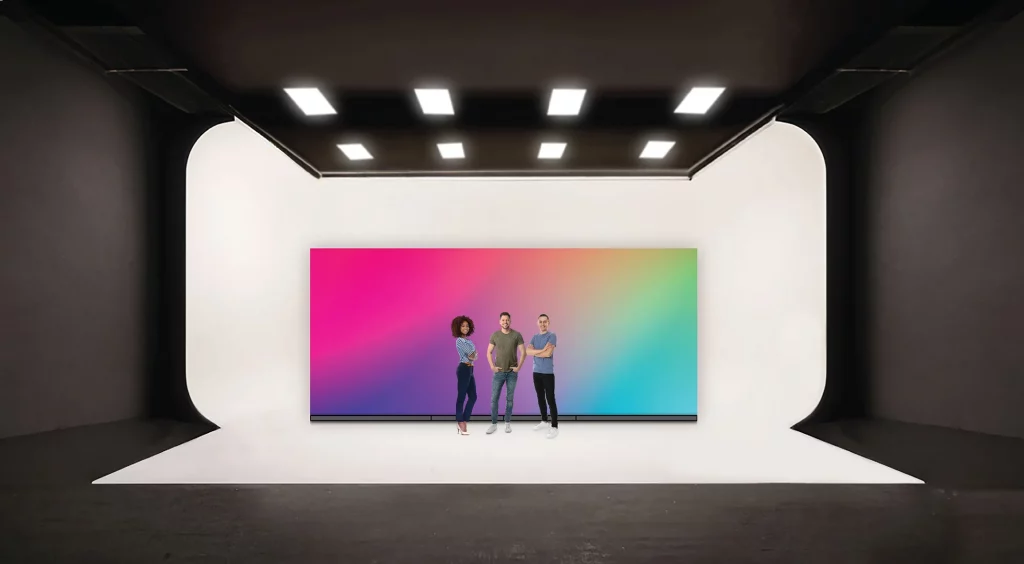Virtual Production vs Traditional Green Screen: What’s the Difference?
 If you’re in the world of film, TV or video production, you’ve likely heard a lot about virtual production lately. But how does it differ from traditional green screen setups, and which one is right for your next shoot?
In this article, we’re going to talk through the pros and cons of each, which can make a big difference to your production quality, timeline and budget.
If you’re in the world of film, TV or video production, you’ve likely heard a lot about virtual production lately. But how does it differ from traditional green screen setups, and which one is right for your next shoot?
In this article, we’re going to talk through the pros and cons of each, which can make a big difference to your production quality, timeline and budget.
Traditional Green Screen: Tried and Trusted
Green screen (also known as chroma keying) is one of the most established visual effects tools in the industry. The subject is filmed in front of a green backdrop, and the background is replaced in post-production with whatever environment the scene calls for, whether that’s a city skyline, a spaceship, or a rolling countryside. Green screen is a flexible, cost-effective method that’s well suited to commercials, interviews, and smaller narrative projects. However, it does come with some challenges:- Actors often perform without real context or reference points
- Lighting must be extremely well controlled to avoid green spill
- Backgrounds can only be judged after post-production is complete
Virtual Production with LED Volumes: A New Era
Virtual production, often using LED volume walls, is a more recent technique that allows digital environments to be displayed live on-set in real-time. This means actors perform in front of a huge LED screen that shows the actual background, whether it’s a 3D landscape, interior, or animated scene. The benefits are:- Real-time environments: Everyone, from actors to DOPs, can see and react to the world around them
- In-camera VFX: Many effects are captured live, reducing time in post
- Natural lighting: LED walls can provide realistic reflections and ambient light
- Faster decision-making: Directors can adjust the virtual environment instantly on set


